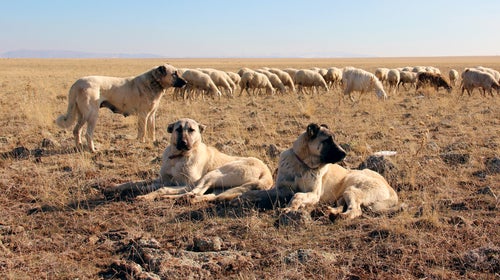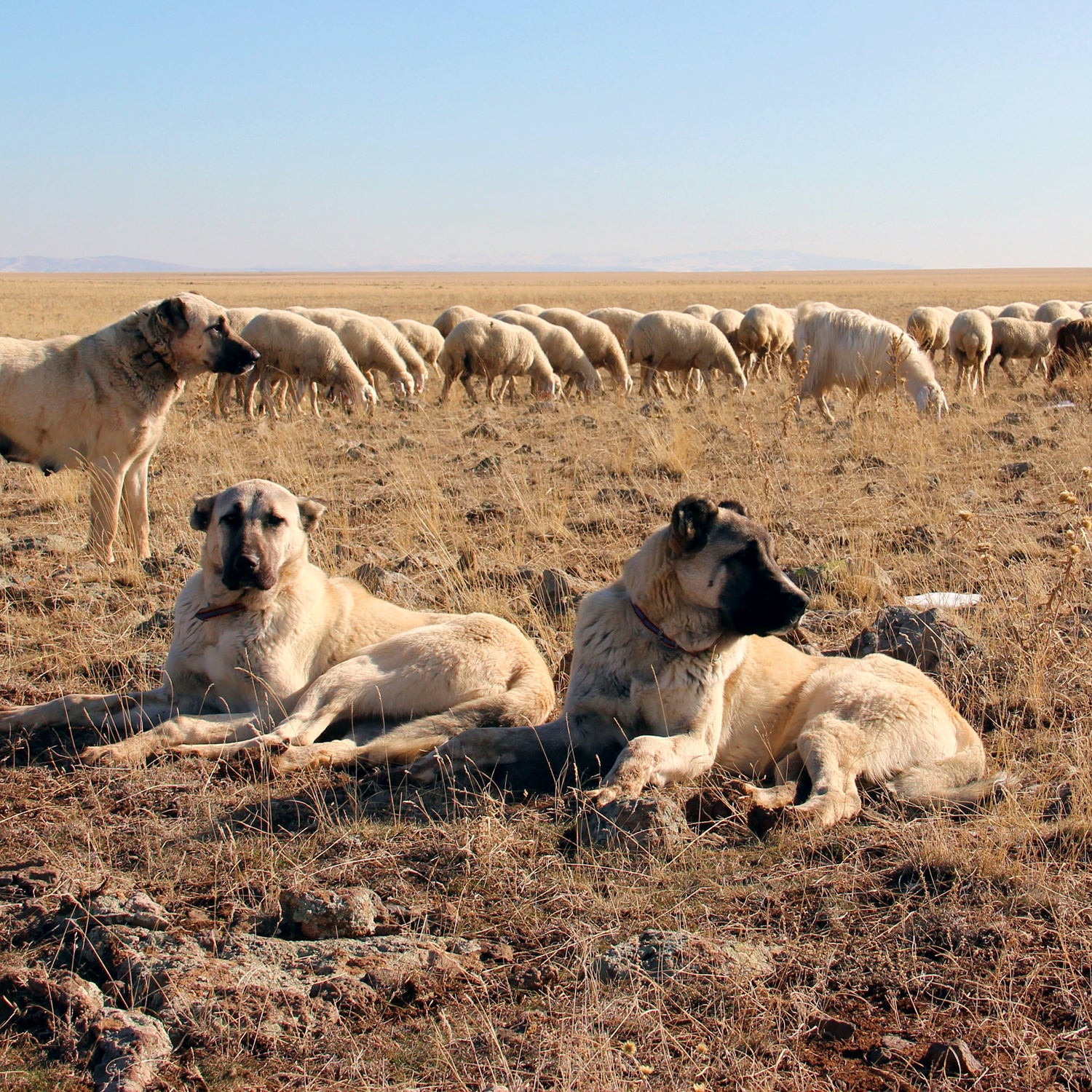Eighteen-month-old Haylaz is eager to swallow a revolting-looking mound of sheep entrails. The 130-pound dog strains at his chain leash as Ali Yuksek struggles to control him. “Haylaz is a strong dog, but he’s also the most difficult and the most annoying,” Yuksek says. Haylaz is a Kangal dog, one of six living on the Yukseks' farm in the highland stepps of central Turkey's Sivas province. The hope is that one day Haylaz, whose name translates to “naughty,” will mature from nuisance to protector—just like the other Kangals that have been bred in this same area for thousands of years.
The highland steppes of Sivas province in central Turkey are a stunning if desolate wilderness reachable by an 80-minute flight from Istanbul and a one-hour drive. On the way to the ranch, the landscape is a flat, brown grassland, blanketed in fog. There are few signs of life, though dog runs attached to a half-dozen homes outside the town of Ulaş suggest we're going in the right direction. We cross over the 5,700-foot-high Yağdonduran Pass before arriving in Misirören, a tiny hamlet comprised of about 10 buildings.
There are no guided tours or other tourist attractions here, but if there were, they'd be all about the Kangal dog. As it is, residents see the dog as a local icon and are glad to show them off. The huge, sand-colored breed is named after a town in the southern Sivas province, where Kangals emerged as a distinct breed about 6,000 years ago. Kangals can grow to about 145 pounds and up to 33 inches tall, surpassing most other massive dog breeds like Great Danes. Today, in Turkey and increasingly in the United States, the viciously protective dogs are known and celebrated as wolf fighters.
“They can fight off a wolf, mountain lion, or bear and then come home and be polite with grandparents and grandchildren.”
Wolves have been a problem for the thousands of years that Turkey's farmers have been raising sheep. They tend to attack alone or in pairs, usually earlier in the day. One man was killed and four others were injured on a farm to the east of the Yukseks' back in June 2013, but for the most part it's the sheep that are at risk—not only from wolves, but thieves too.
Like many other families who are still farming in Turkey, the Yukseks rely on sheep as their primary source of income—so they also rely on their Kangals to protect their resources. Ali and his father Aziz own six Kangals on 120 acres of rolling steppe in the Sivas province. The dogs boast an intimidating size, a thick coat that protects against bites, and fearlessness—they're capable of killing a wolf but sometimes the sight of a Kangal alone is enough to scare large predators away. The most cherished dog is Haylaz's own father, Serkan, who's taken down two wolves in the past three years.
Every winter morning, the Yuksek family wakes at 5:30 a.m. to feed the sheep, dairy cows, and dogs before sitting down for a breakfast of honey, butter, cheese, and bread. The Yukseks’ sheep graze on a flat, six-square-mile plateau towering above Misirören. The view up here is spectacular at the altitude of 5,000 feet, and it’s an eye-watering 20 degrees in the wind. The shepherds whistle and shout all the time at the sheep, directing them this way and that, but it’s not common for the Kangals to face anywhere in the direction of the flock. Their heads are always pointed towards the horizon or the nearest hillside; they are always on watch. When we load into an SUV at the end of a bitterly cold day, they’re still looking out into the distance with no desire to turn in.
Ranchers in the U.S. are now starting to take interest in Kangals. Breeders in western Montana have imported the dogs since 2009, and 20 Kangals were imported from Turkey in 2014 for a joint research program on wolf predation by the U.S. Department of Agriculture and U.S. Fish and Wildlife Service. Jan Dohner, the vice president of the Kangal Dog Club of America, says there's been substantial interest in the dogs recently, “especially as livestock raisers search for nonlethal methods of large predator control.”
The dogs have been paired with farmers since they can guard against bears and wolves, but they get along with people. And they're tough, too—able to work through windy winters and dry, hot summers. For Vose Babcock, whose cattle ranch is situated outside Missoula, Kangals are the perfect dog for rural living. “They're good with house guests and baby livestock, but don't like thieves.”
The sight of the huge, watchful dogs may become more common on American ranches in the coming years—the USDA will continue to breed the dogs imported in 2014. Babcock sees no downside: “They can fight off a wolf, mountain lion, or bear and then come home and be polite with grandparents and grandchildren.”

